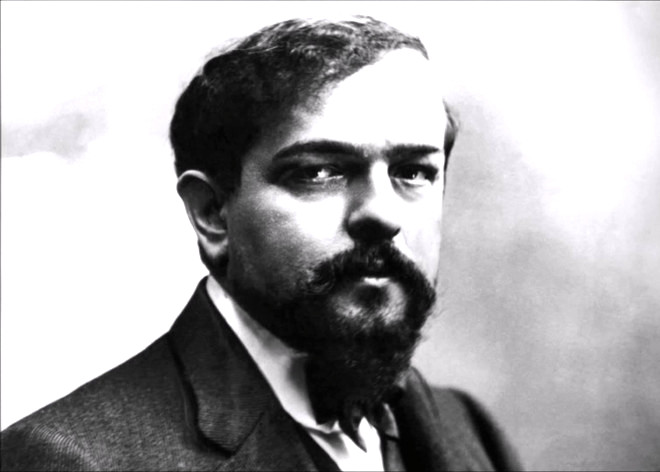
I rather like the story about the child at elementary school who was asked by her teacher which is most useful, the sun or the moon. After a few moments’ thought she decided that the moon is more useful, because it shines during the night when we need the light, whereas the sun shines during the day when it’s light anyway.
You’d think that there would be dozens of pieces of music inspired by the moon, but it would seem that over the years, the moon – and the sun, for that matter – has had more of an impression on painters and poets rather than composers.
I suppose the first thing people think of, at least in classical music, is Beethoven’s “Moonlight Sonata” which is unfortunate, because it has nothing to do with the moon. It’s a sonata for piano which begins with a long slow movement. In 1832 the German music critic Ludwig Rellstab remarked that it reminded him of moonlight shining on Lake Lucerne. Within ten years the name “Moonlight Sonata” had caught on, and it was used in most publications of the sonata. It’s unlikely that moonlight was on Beethoven’s mind at the time, because the music sounds more like a funeral dirge and in any case, the fast and furious last movement seems to have been inspired by a force ten hurricane.
Perhaps one of the first moon-inspired operas was Joseph Haydn’s Il mondo della luna (“The World on the Moon”) written in 1777. A hundred and sixty years later Carl Orff wrote a one-act opera Der Mond, based on a fairy tale by the Grimm Brothers. Then there’s the 1912 melodrama Pierrot Lunaire (or “Moonstruck Pierrot”) by Arnold Schoenberg, as well a few moon-inspired piano pieces and arias that litter the repertoire. The American composer Edward MacDowell wrote a piano solo called To the Moonlight and Leopold Godowsky wrote a sadistically difficult piece for piano entitled Borobudur in Moonlight, referring to the Indonesian temple of the same name.
Suite Bergamasque is one of the composer’s most well-known piano works, based on poems written by Paul Verlaine, a colourful and ultimately tragic figure, part of whose life was immortalised in the 1995 movie Total Eclipse.
Debussy started the work in 1890, but it went through several major revisions before publication in 1905. The composer changed the names of at least two of the pieces. Clair de Lune for example, was originally entitled Promenade Sentimentale. The piece is not particularly easy to play and requires a pretty good technique merely to get the notes in the right order, let alone give them some kind of meaning. Angela Hewitt is a British-Canadian classical pianist and in this excellent CBC production, she gives a beautifully shaped and moving performance at a concert at Toronto’s Koerner Hall.
Clair de Lune arr. Stokowski. Philadelphia Orchestra, cond. Wolfgang Sawallisch (Duration: 05.41; Video: 240p)
If you taste runs to orchestral music rather than piano solos, you might be interested to know that Clair de Lune has been orchestrated by several different composers including André Caplet, Leopold Stokowski and Dimitri Tiomkin of Hollywood fame, best known for his music for westerns. Stokowski’s arrangement is especially effective and this 1999 recording was filmed at the Minato-Mirai Hall in Yokohama. The Philadelphia strings are superb and there are some lovely woodwind solos. Listen for a magic moment at 3:45 where Stokowski uses the vibraphone to haunting effect.
Antonín Dvoøák (1841-1904, Bohemia): Song to the Moon from Rusalka. Renée Fleming (sop), BBC Symphony Orch cond. Jiri Belohlavek (Duration 06:54; Video: 420p)
One of the few lunar arias is Vaga luna, che inargenti (“Beautiful moon, dappling with silver”) written by the tremendously successful but sadly short-lived Italian composer Vincenzo Bellini. Antonín Dvoøák wrote ten operas, and Rusalka is his ninth, a three-act work first performed in Prague in 1901.
In Slavic mythology, a rusalka is a water nymph which inhabits lakes and rivers and the most popular aria is Song to the Moon. In the story, Rusalka has fallen in love with a human prince who often hunts near the lake, presumably for wild animals rather than water nymphs. In a melancholy mood, Rusalka asks the moon to tell the prince of her love.
In this video, the American soprano Renée Fleming sings the aria in the original Czech but you might be relieved to know, there are subtitles. It’s a recording made at London’s Proms and Renée Fleming gives a moving and beautifully-phrased performance with an impassioned and powerful climax.
 |
 |
 |





